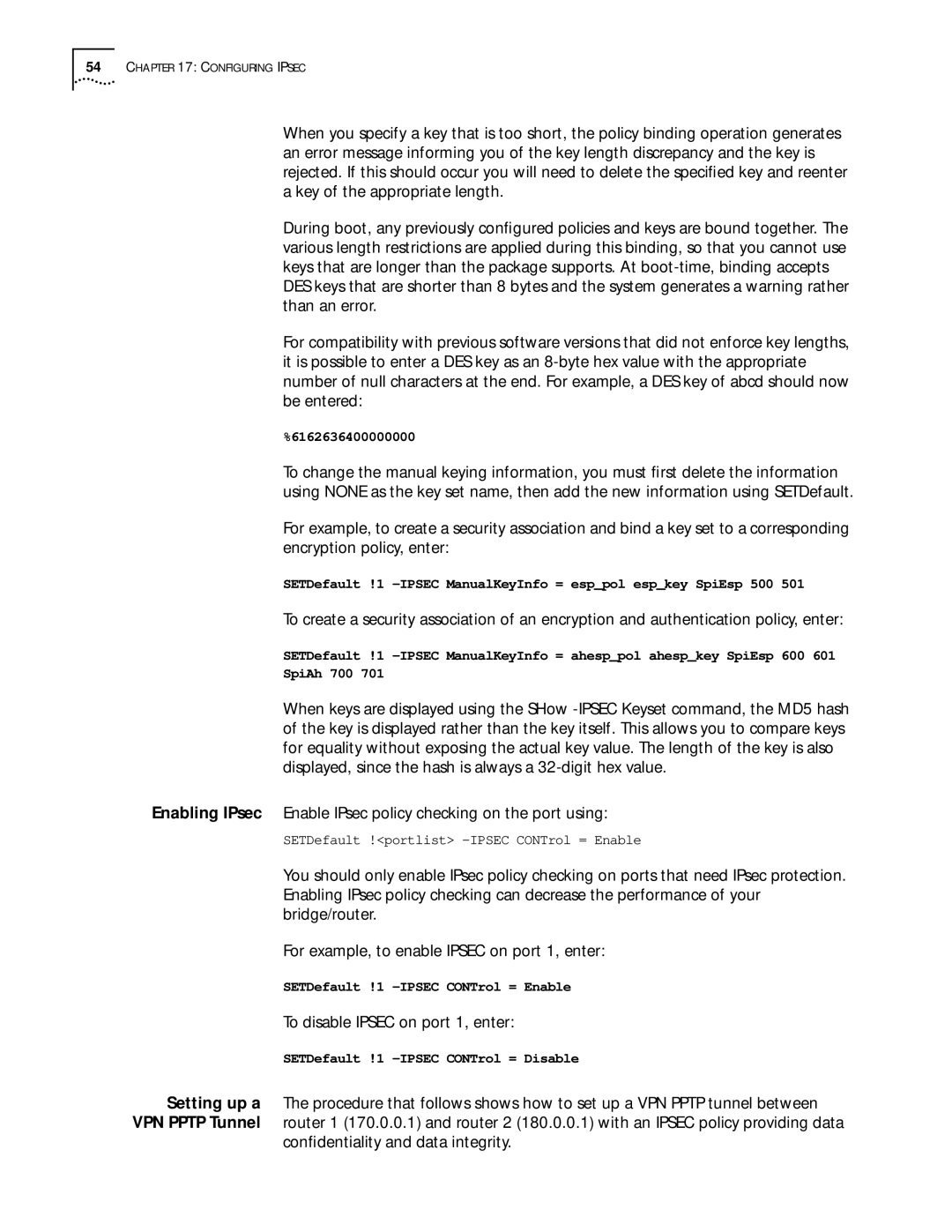54CHAPTER 17: CONFIGURING IPSEC
When you specify a key that is too short, the policy binding operation generates an error message informing you of the key length discrepancy and the key is rejected. If this should occur you will need to delete the specified key and reenter a key of the appropriate length.
During boot, any previously configured policies and keys are bound together. The various length restrictions are applied during this binding, so that you cannot use keys that are longer than the package supports. At
For compatibility with previous software versions that did not enforce key lengths, it is possible to enter a DES key as an
%6162636400000000
To change the manual keying information, you must first delete the information using NONE as the key set name, then add the new information using SETDefault.
For example, to create a security association and bind a key set to a corresponding encryption policy, enter:
SETDefault !1
To create a security association of an encryption and authentication policy, enter:
SETDefault !1
SpiAh 700 701
When keys are displayed using the SHow
Enabling IPsec Enable IPsec policy checking on the port using:
SETDefault !<portlist>
You should only enable IPsec policy checking on ports that need IPsec protection. Enabling IPsec policy checking can decrease the performance of your bridge/router.
For example, to enable IPSEC on port 1, enter:
SETDefault !1
To disable IPSEC on port 1, enter:
SETDefault !1
Setting up a The procedure that follows shows how to set up a VPN PPTP tunnel between VPN PPTP Tunnel router 1 (170.0.0.1) and router 2 (180.0.0.1) with an IPSEC policy providing data
